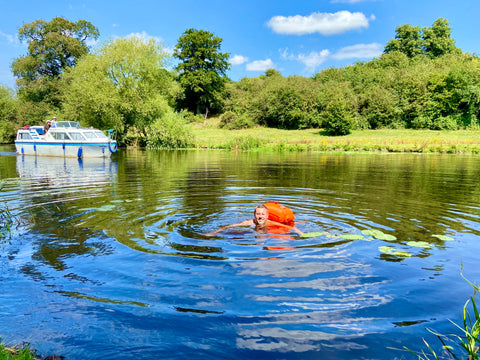OPEN WATER SAFETY GUIDE

For many the transition from pool to open water can be a daunting one, but with some simple safety steps the delights of the great outdoors are closer than you think. For dedicated pool bunnies the major difference will be the temperature. While not as warm as a pool – open water generally varies between 15 to 20 degrees in summer – don’t be put off by the cold. You may want to use a specially designed swimming wetsuit that will keep you warm, help with buoyancy and allow you to use your natural stroke unhindered. Many swimmers enjoy the more traditional method of a standard swim suit, giving themselves time to acclimatise to the water.
Open water swimming is possible in rivers, lakes and the sea around the UK. There are dedicated open water swimming venues across the country and patrolled sections of beach that offer the reassurance of a lifeguard watching out for you. Many open water venues offer induction and training sessions for newbies, after all open water swimming is one of the fastest growing sports in the UK!
If you are not swimming in a patrolled area, make sure you always swim with a buddy and that people know what time to expect you back. Plan your swim before you leave and take into account currents and tides. When trying to find a location to swim it’s a good idea to find other open water swimmers from the area, there are a multitude of Facebook groups as well as social groups and swimming clubs across the country. Local knowledge is so important while trying to find a good safe swim spot and you may find some fellow swimmers to tag along with.
Enter the water slowly and let your body acclimatise, getting into cooler water too quickly can result in reduced blood flow to your limbs and an automatic increase in your breathing rate. Jumping in might seem like fun but you risk cold water shock and hitting objects under the surface by not getting in gradually.
Being visible is very important in open water when there are other water users. A brightly coloured hat is essential, and an inflatable tow float pulled behind you on a short leash gives a clear signal that there is a swimmer in the water. The tow float also has the added advantage of taking your weight if you need to rest during your swim, and some models like the Swim Secure Tow Donut have a waterproof compartment so that you can take your valuables with you while you swim.
Always start with short swims and increase the length of your swims over time as you become more experienced and tolerant of the conditions.
You should end your swim if you start to get cold or you feel yourself tiring, both signs that your core temperature could be dropping. Make sure you have some warm clothes waiting for you on shore as you will get colder once you exit the water as blood returns to your cooler extremities. A hot drink at the end of a swim is a great idea but avoid alcohol as this will cause you to lose heat.
Here is a quick recap of the above guidelines:
Cover photo is Marathon Man, Alan Corcoran and his photo was taken by photographer and drone operator Peter Grogan.